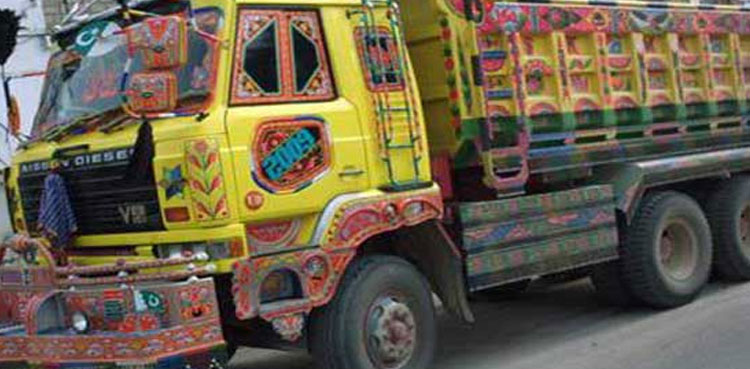Karachi, Pakistan’s largest city and economic hub, has been grappling with a surge in traffic accidents involving heavy vehicles. Recent incidents have highlighted the urgent need for effective traffic management and stricter enforcement of safety regulations.
As the city struggles to cope with its growing population and infrastructure challenges, it is imperative to look toward international best practices for managing heavy traffic. By adopting globally recognized rules and strategies, Karachi can mitigate accidents, improve road safety, and ensure smoother traffic flow.
The Current Situation in Karachi
Karachi’s roads are a chaotic mix of cars, motorcycles, buses, trucks, and rickshaws, often competing for space in an unregulated environment. Heavy vehicles, such as trucks and trailers, are frequently involved in accidents due to overloading, poor maintenance, and reckless driving. The lack of dedicated lanes for heavy traffic, inadequate driver training, and weak enforcement of traffic laws exacerbate the problem. Recent accidents have resulted in loss of life, property damage, and severe traffic congestion, underscoring the need for immediate action.
International Best Practices for Heavy Traffic Management
To address Karachi’s traffic woes, it is essential to study and implement international rules and strategies that have proven effective in managing heavy traffic. Here are some key practices:
1. Strict Licensing and Training for Heavy Vehicle Drivers
- Global Standard: Countries like Germany, Japan, and the United States require specialized licenses for heavy vehicle drivers, along with rigorous training programs that emphasize safety and defensive driving.
- Application in Karachi: Implementing a similar system in Karachi would ensure that drivers of trucks, buses, and other heavy vehicles are well-trained and aware of road safety protocols. Regular refresher courses and mandatory certifications can further enhance driver competence.
2. Enforcement of Weight Limits and Vehicle Maintenance
- Global Standard: In the European Union and the United States, heavy vehicles are subject to strict weight limits and regular inspections to ensure they are roadworthy. Overloaded or poorly maintained vehicles are fined or impounded.
- Application in Karachi: Enforcing weight limits and mandatory vehicle inspections can prevent accidents caused by overloading and mechanical failures. Setting up weigh stations at key entry points to the city can help monitor compliance.
3. Dedicated Lanes for Heavy Traffic
- Global Standard: Cities like Singapore and Tokyo have designated lanes for heavy vehicles, separating them from lighter traffic to reduce congestion and accidents.
- Application in Karachi: Creating dedicated lanes for trucks and buses on major highways and arterial roads can minimize interactions between heavy vehicles and smaller vehicles, reducing the risk of collisions.
4. Use of Technology for Traffic Management
- Global Standard: Advanced traffic management systems, such as GPS tracking, automated weigh-in-motion sensors, and real-time traffic monitoring, are widely used in countries like South Korea and the Netherlands.
- Application in Karachi: Investing in smart traffic management systems can help authorities monitor heavy vehicle movements, enforce speed limits, and respond quickly to accidents or breakdowns.
5. Nighttime Movement Restrictions for Heavy Vehicles
- Global Standard: Many cities, including Paris and New York, restrict the movement of heavy vehicles during peak hours to reduce congestion and improve safety.
- Application in Karachi: Implementing nighttime movement restrictions for heavy vehicles on busy urban roads can alleviate daytime traffic pressure and lower the risk of accidents.
6. Public Awareness Campaigns
- Global Standard: Countries like Australia and Canada run public awareness campaigns to educate drivers and pedestrians about road safety, particularly around heavy vehicles.
- Application in Karachi: Launching similar campaigns in Karachi can help raise awareness about the dangers of reckless driving, overloading, and ignoring traffic signals.
Challenges and the Way Forward
While adopting international rules for heavy traffic management is crucial, Karachi faces several challenges in implementation. These include inadequate infrastructure, corruption, and a lack of political will. To overcome these obstacles, the following steps are essential:
- Government Commitment: The provincial and local governments must prioritize road safety and allocate sufficient resources for infrastructure development and law enforcement.
- Public-Private Partnerships: Collaborating with private companies and international organizations can bring in expertise and funding for traffic management projects.
- Community Involvement: Engaging citizens and stakeholders in the planning and implementation process can ensure that solutions are practical and widely accepted.
The rising number of accidents involving heavy vehicles in Karachi is a wake-up call for urgent action. By learning from international best practices and adapting them to local conditions, the city can create a safer and more efficient traffic system. Strict enforcement of regulations, investment in infrastructure, and public awareness are key to achieving this goal.
Karachi has the potential to transform its chaotic roads into a model of urban traffic management, but it requires collective effort and unwavering commitment from all stakeholders. The time to act is now.



Leave a Comment